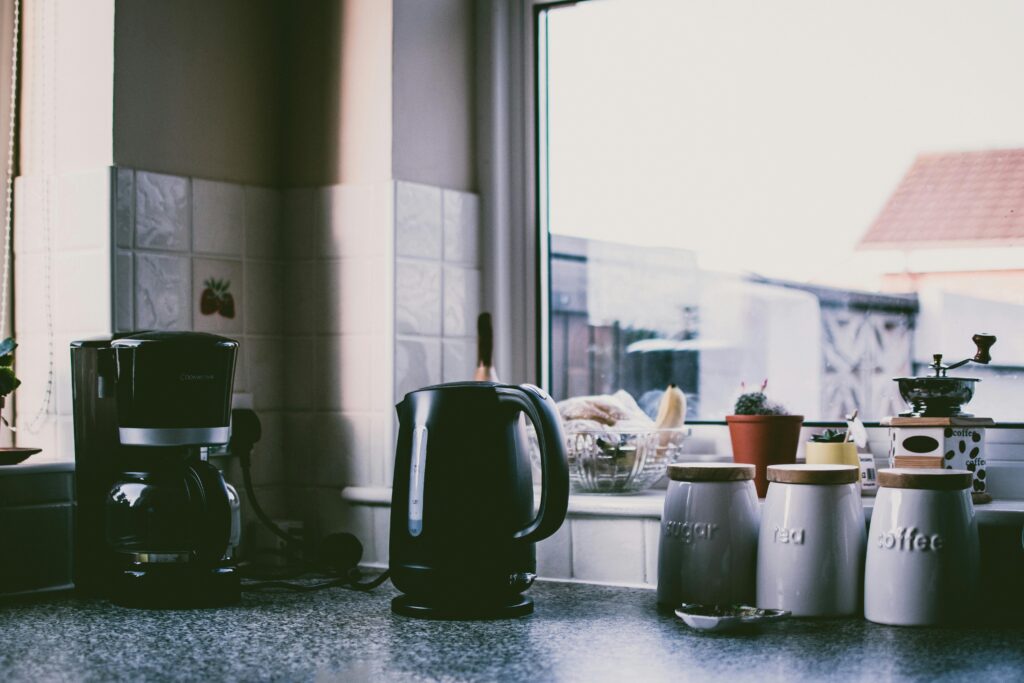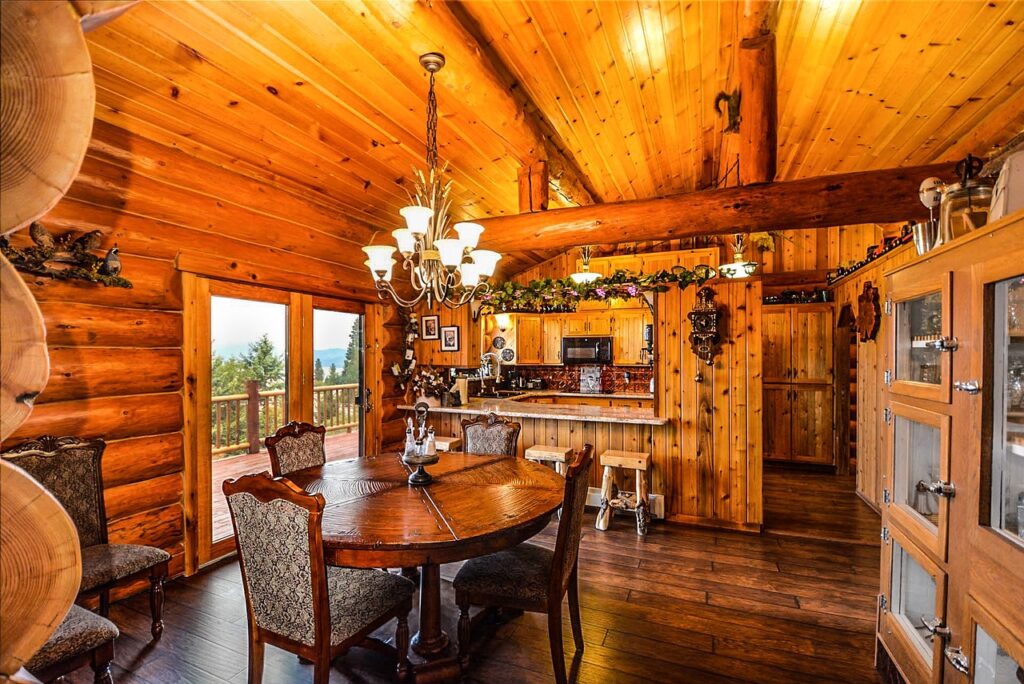Add personality and style to your small kitchen with these clever color scheme suggestions that will make the room appear larger. From pure whites, warm earth tones, light-as-air pastels, or bold primary colors, finding the right color can make all the difference. Consider the mood you want to create and how much light the kitchen gets before selecting wall colors, cabinet design, and surfaces. Restricting yourself to two or three main colors will keep the kitchen from feeling cluttered or busy. Great color schemes will inherently connect your kitchen to the rooms around it, and the entire area will seem larger. Use these small kitchen color schemes for a striking renovation.
Wood + White + Green: A Fresh Color Scheme for Small Kitchens
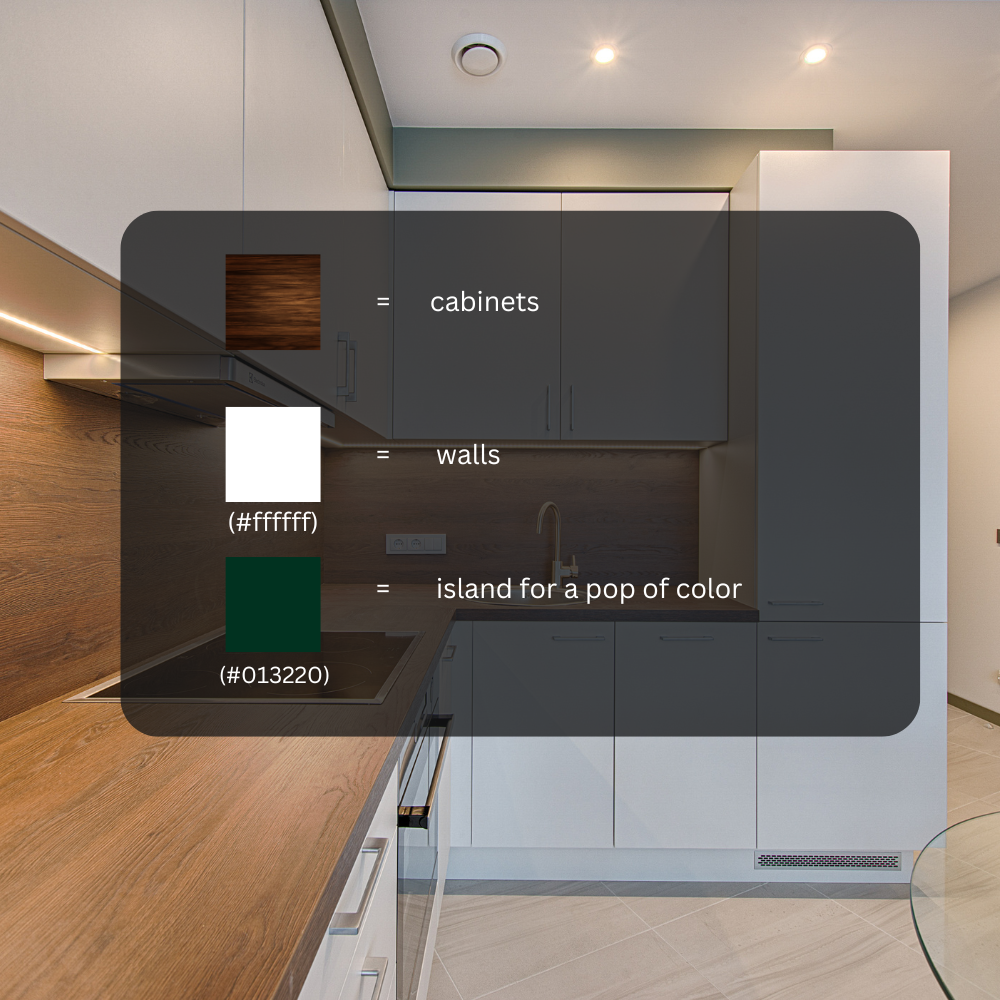
Stained wood cabinetry like this with bright white trim is an unconventional yet beautiful design choice.
It modernizes traditional wood cabinetry without sacrificing its warm, inviting sense. A touch of natural color is provided to the natural hue of the kitchen by the addition of forest green wallpaper, and background orange within the wallpaper heightens the color depth of the wood tones. Wallpaper is an affordable way to introduce additional pattern and color beyond a typical tile backsplash, and it’s also the way to simply revamp your kitchen’s look.
Black + White + Metallic: Sophisticated Color Ideas for Small Kitchens
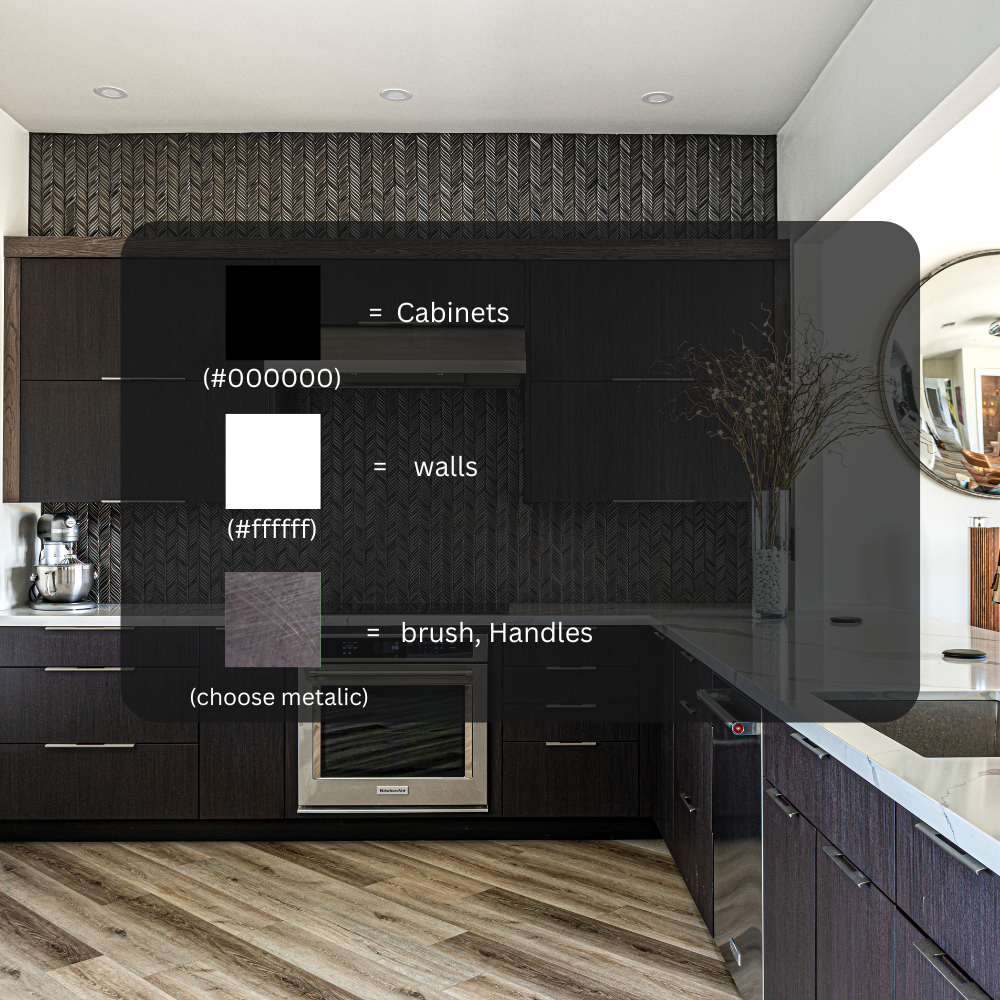
Sensational and sophisticated is how black cabinets look in any kitchen, but paired with lots of white, so the room is not dark and cumbersome.
Contrast is judiciously applied, from the black window trim to the black-framed mirror on the shelf, for an urbane, considerate look. Warm metallic accents, such as brass hardware and detailing, add a spot of finish and prevent the monochrome design from looking frigid. A few of those metallic accents come courtesy of elegantly exposed kitchen implements along the backsplash, achieving a sophisticated but functional design.
Navy Blue + Brown
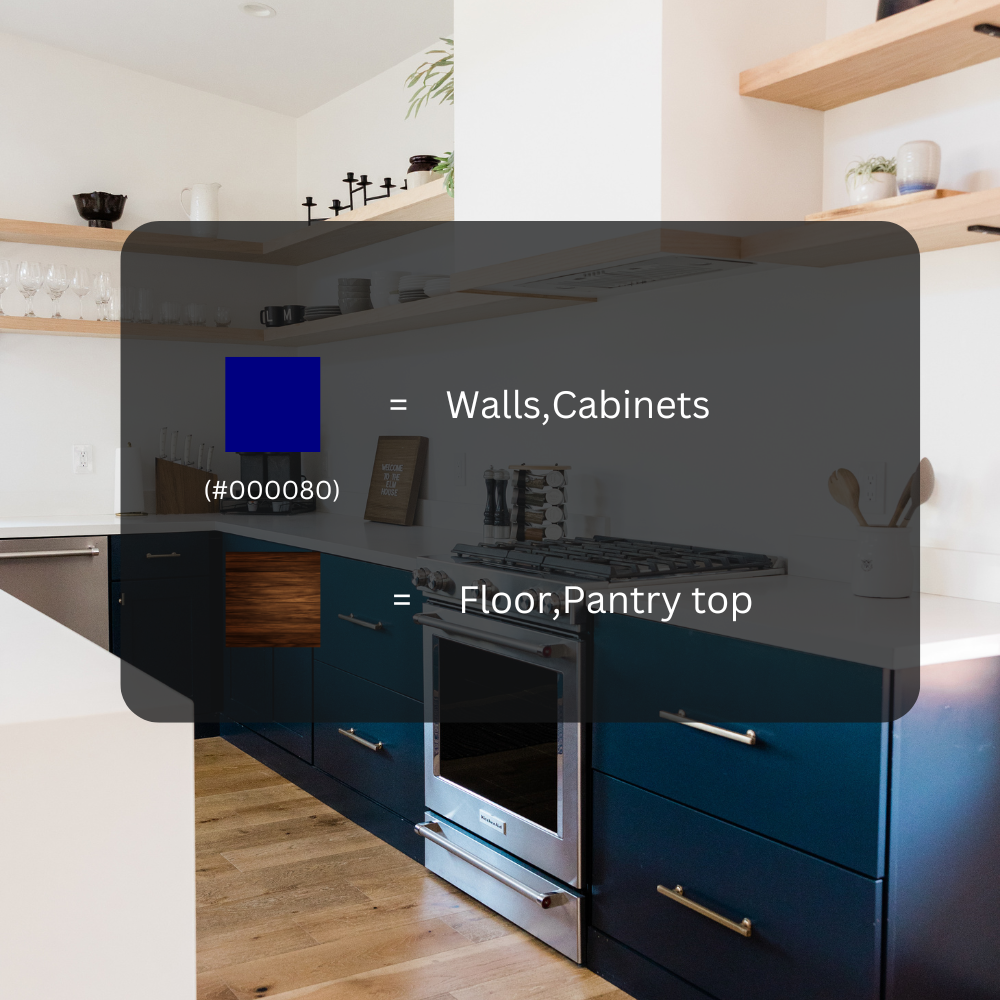
A small kitchen doesn’t have to mean you should steer clear of dark colors—just apply them sparingly.
To avoid the room from becoming closed in, counterbalance deep color with plenty of white. Deep navy blue is applied on the island and some cabinetry elements in this look to make a dramatic statement. Contrast with a white subway tile backsplash and white appliances keeps the kitchen light and airy. Leather bar stools warm up the rich wood countertops and shelves, giving depth and texture to a harmonious, inviting look.
Turquoise + Yellow
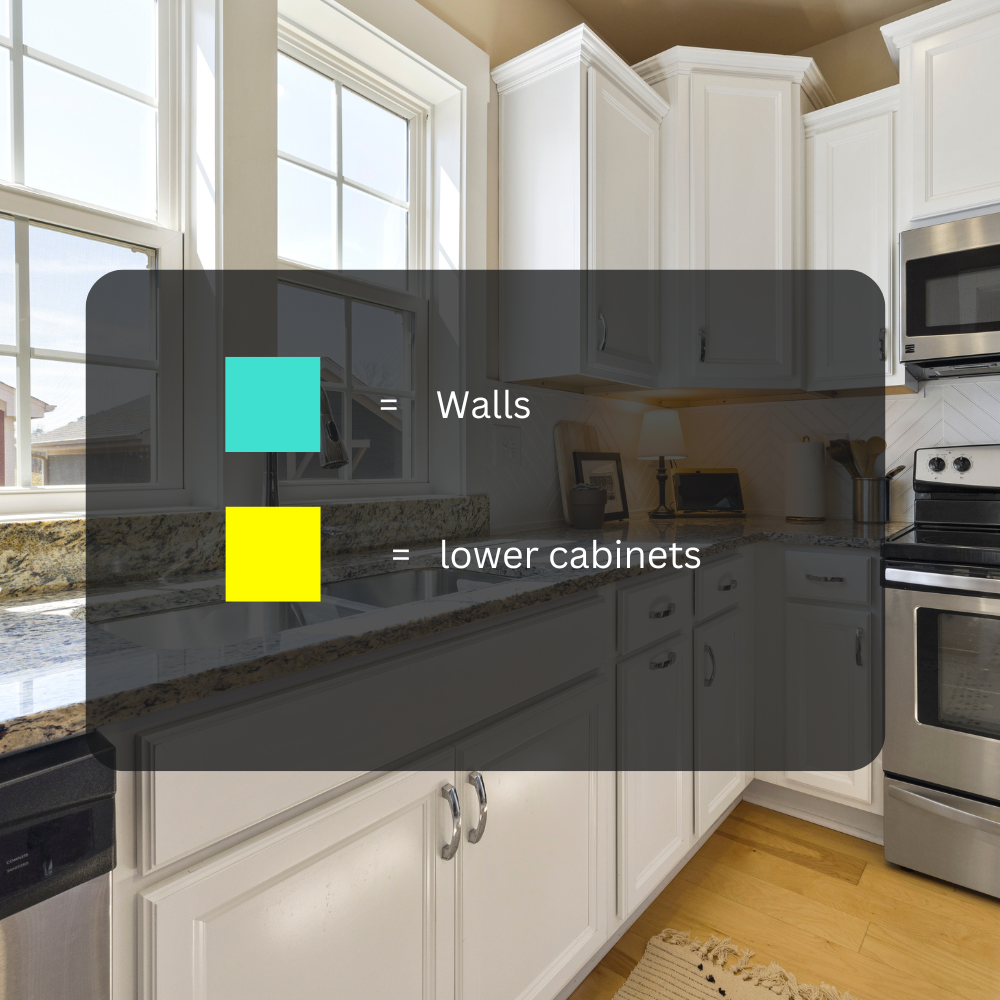
White and turquoise are a perfect pair because they are color wheel complements. White walls, ceilings, and backsplashes bounce light and cause the edges of a small kitchen to visually recede, giving the room the illusion of being larger. Opt for a crisp white for the cabinets and walls and introduce color through turquoise accents like powder-coated barstools. Small splashes of a second contrasting hue, like bright yellow cafe curtains and a painted glass cabinet door, bring personality and warmth to the space.
Off-White + Wood
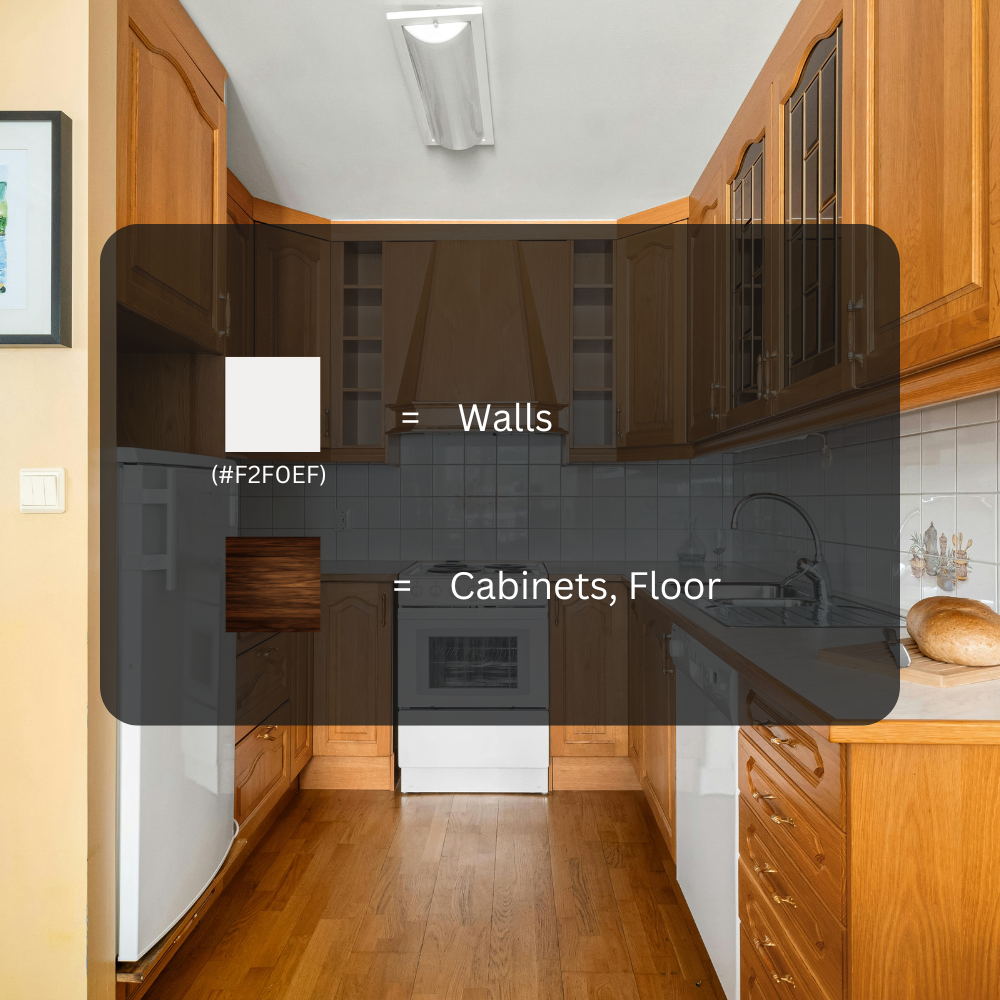
If a white kitchen is your ideal kitchen, do it!
You don’t need to introduce bold color to impart personality to a small kitchen. An all-white or white-on-white design, like this one, can create the illusion of a larger space, but the key to making it engaging is using a variety of whites. Combine crisp white, buttery white, and pale gray-tinted whites to create depth and texture. The island’s warmth and hardwood floors add a sense of warmth to the look, negating the cold of the whites and producing a welcoming, warm space in the kitchen.
Aqua Blue + Wood
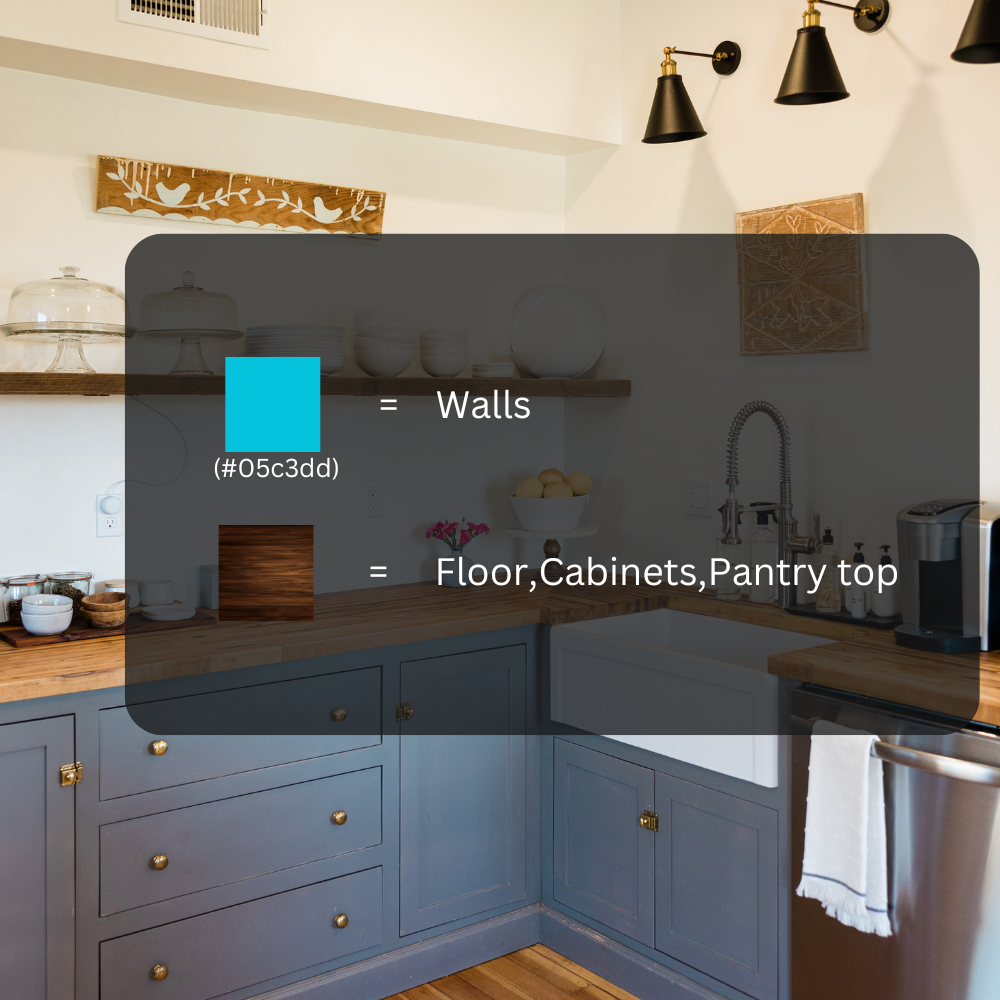
A warm-colored wall, wood cabinets, and a bright accent color always result in a welcoming kitchen.
Dark brown cabinetry was perhaps once intimidating, but with the new two-tone style of white upper cabinetry and wood lowers, it’s been held in check. Multi-colored tile backslashes introduces color, naturally, but also dynamic movement and energy to the space. Banquettes and open shelving offer great opportunities for the introduction of a splash of bold color, like yellow pillows and accent pieces, in order to add another dash of energy to the aesthetic.
Yellow + White
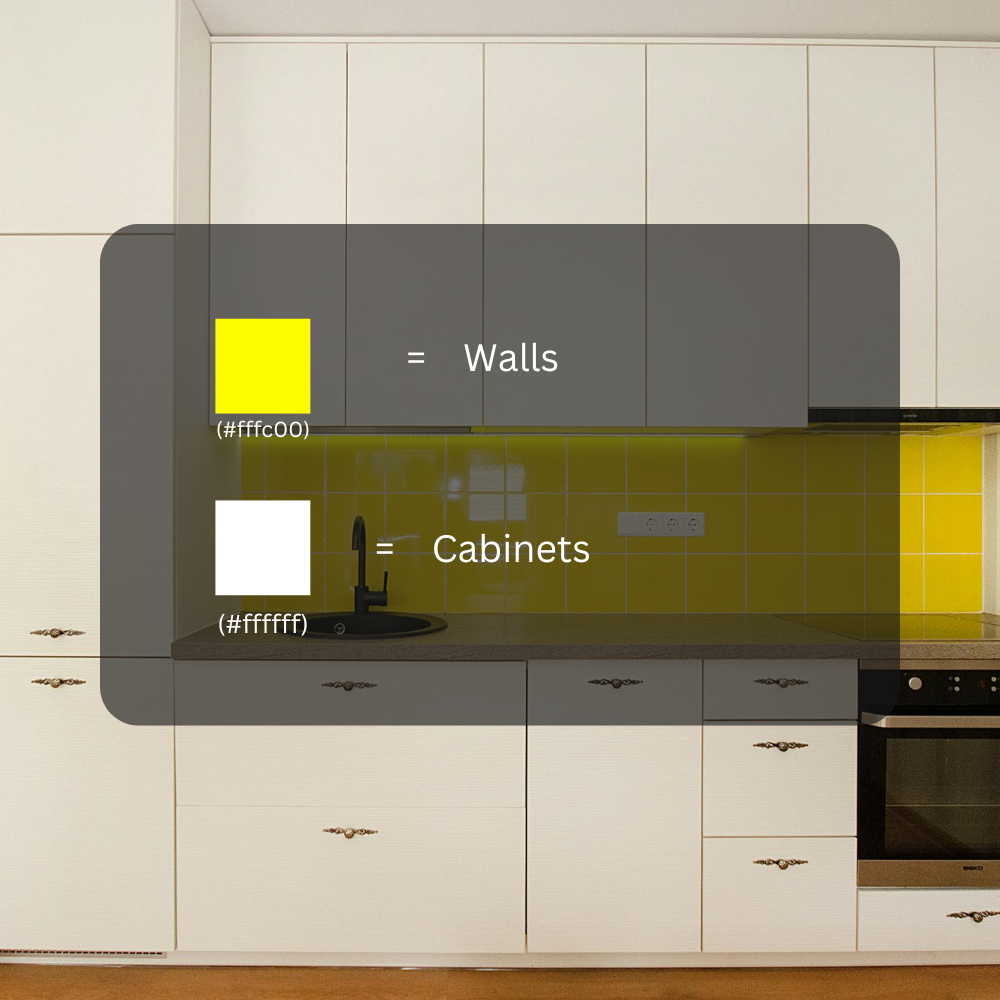
Yellow has been a standard color for tiny kitchens for many years, which creates a friendly and welcoming feel, whether in walls or cabinetry.
Its bright color beams at you when you wake up in the morning and illuminates the room with the energy of vitality when night falls and lights are switched on.
With traditional white cabinets, a yellow wall can add some color and zest. Or yellow walls and cabinets with white create a soothing, clean look. To offset the lightness, pair the yellow with a darker countertop, like soapstone or black marble, and a warm brown wood floor to add contrast and warmth.
Mint Green + White
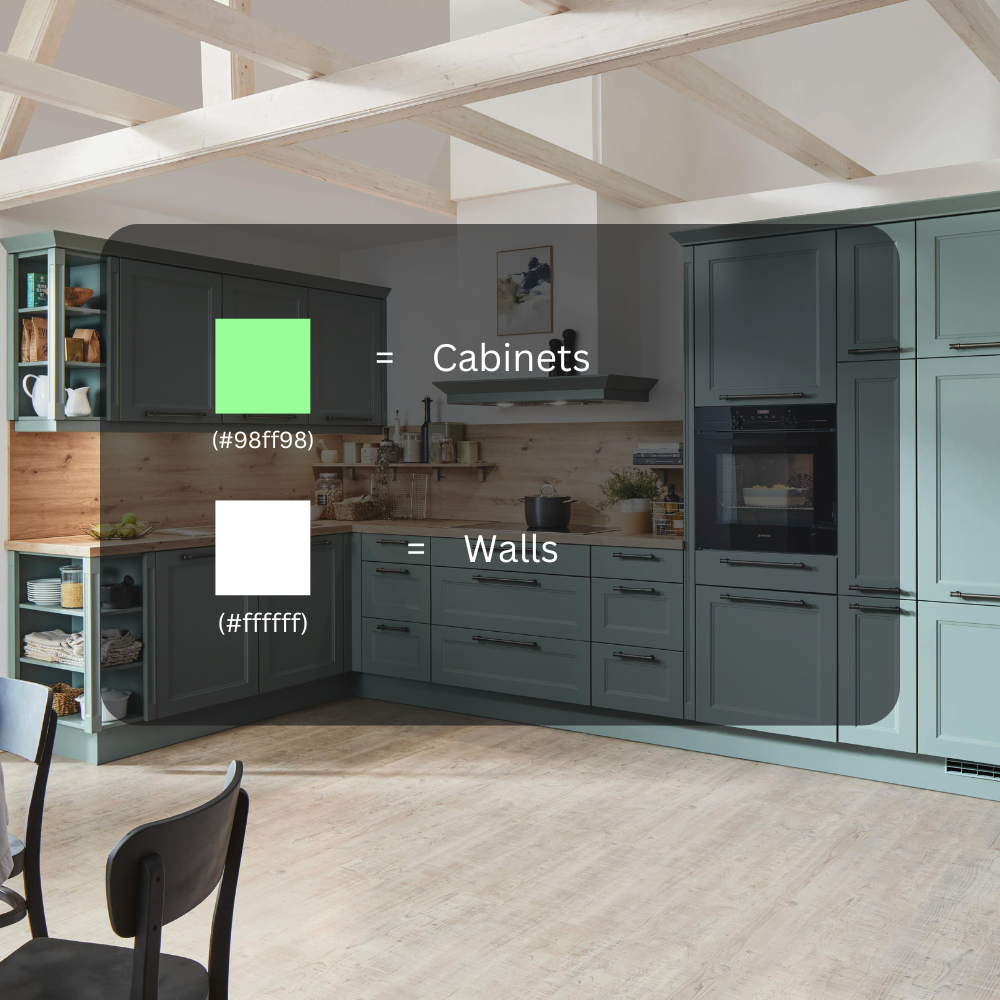
Mint green cabinets provide a soft, surprising splash of color to a small kitchen. White appliances, chairs, and backsplash keep the space open, and black accents—in the hardware, lighting, and even the grout for the backsplash—add dramatic contrast. A speckled gray countertop brings together the black and white and gives a sense of balance to the room.
Gray + Green
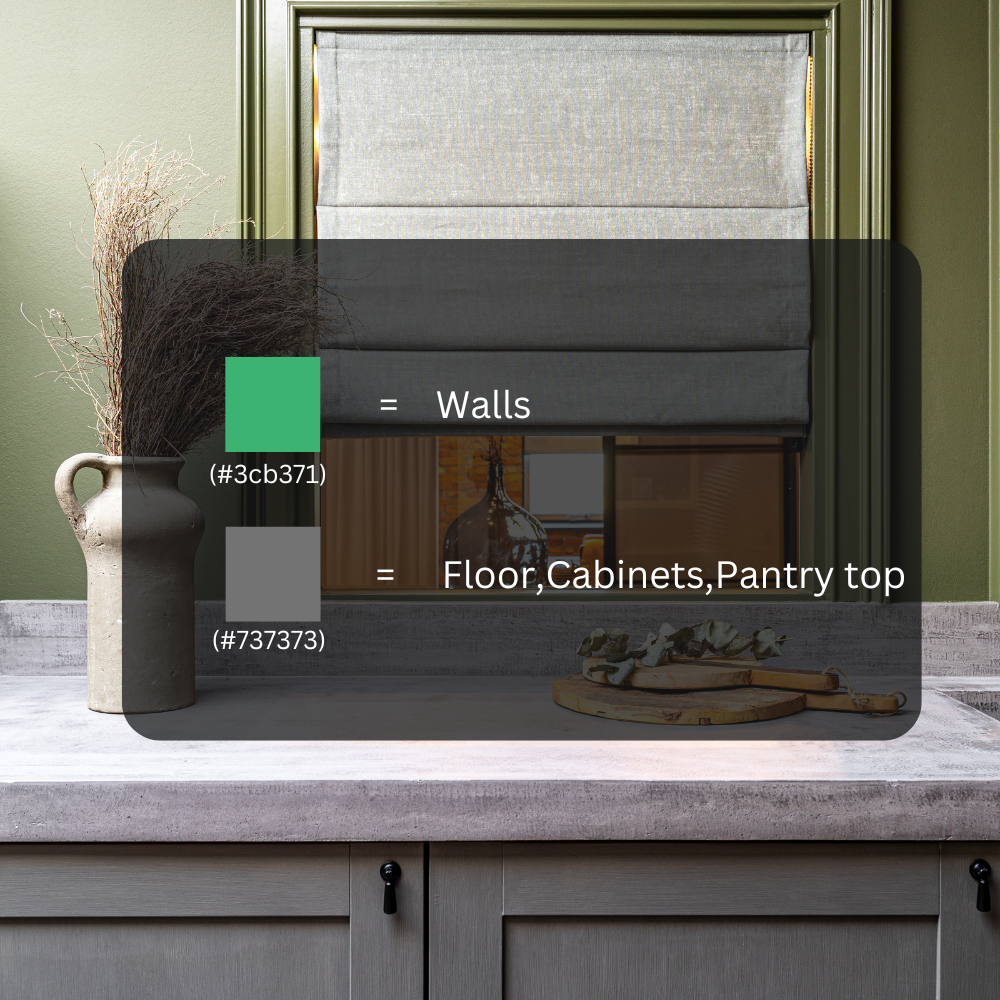
Monochromatic color palettes are particularly well suited to small kitchens as they produce an illusion of openness and flow.Where there is minimal contrast among woodwork, walls, and countertops, the space appears larger than it is.
Light gray countertops and cabinets paired with stainless steel appliances produce an unbroken background here. Interest is created by the soft green tile backsplash, and the lightest green is repeated in the window shade for a quiet unifying effect.
Steel Gray + Copper
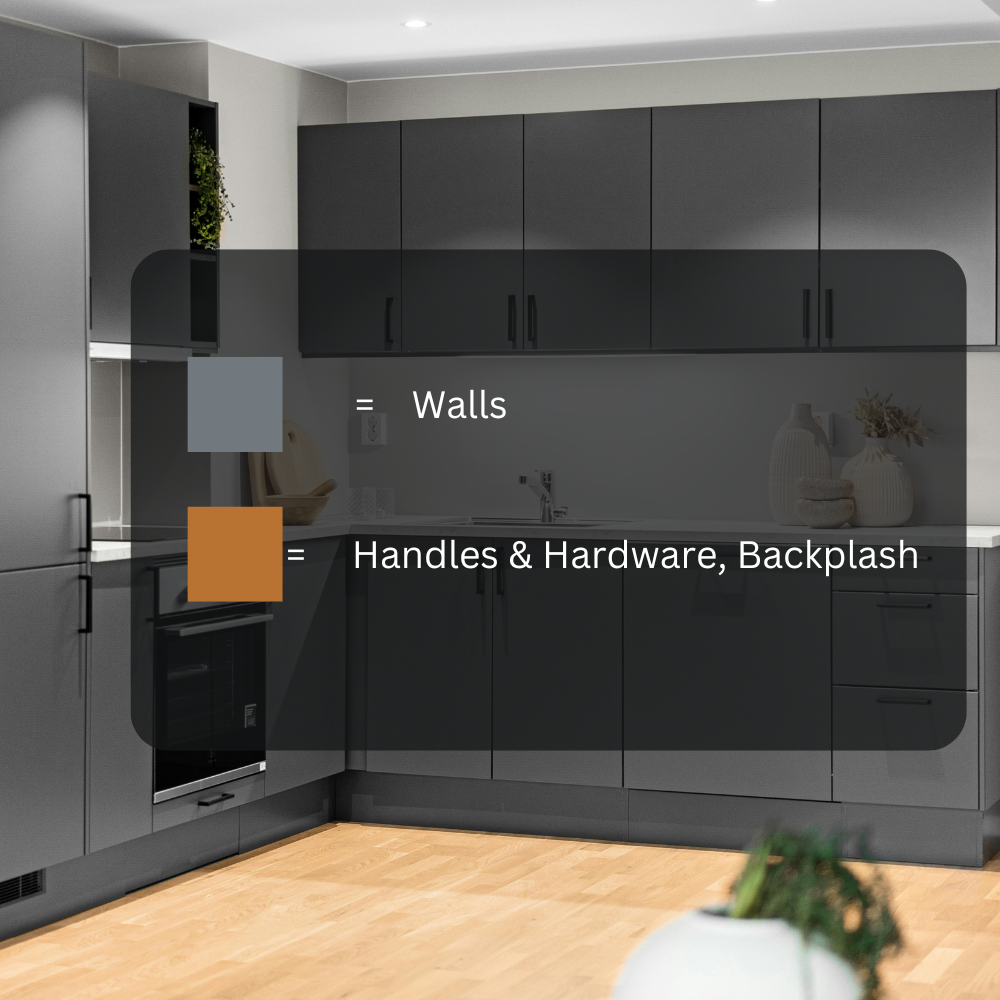
Warming up the cold background that the blue-gray cabinets create in this kitchen by adding some intentional copper accents. Easy ways to add copper to a kitchen are through hanging copper pots, adding a copper farmhouse sink, or putting pendant lights with copper shades. A neutral floor and countertop will not contrast with cabinet color but will give the room the illusion of looking lighter.
Olive Green + Wood
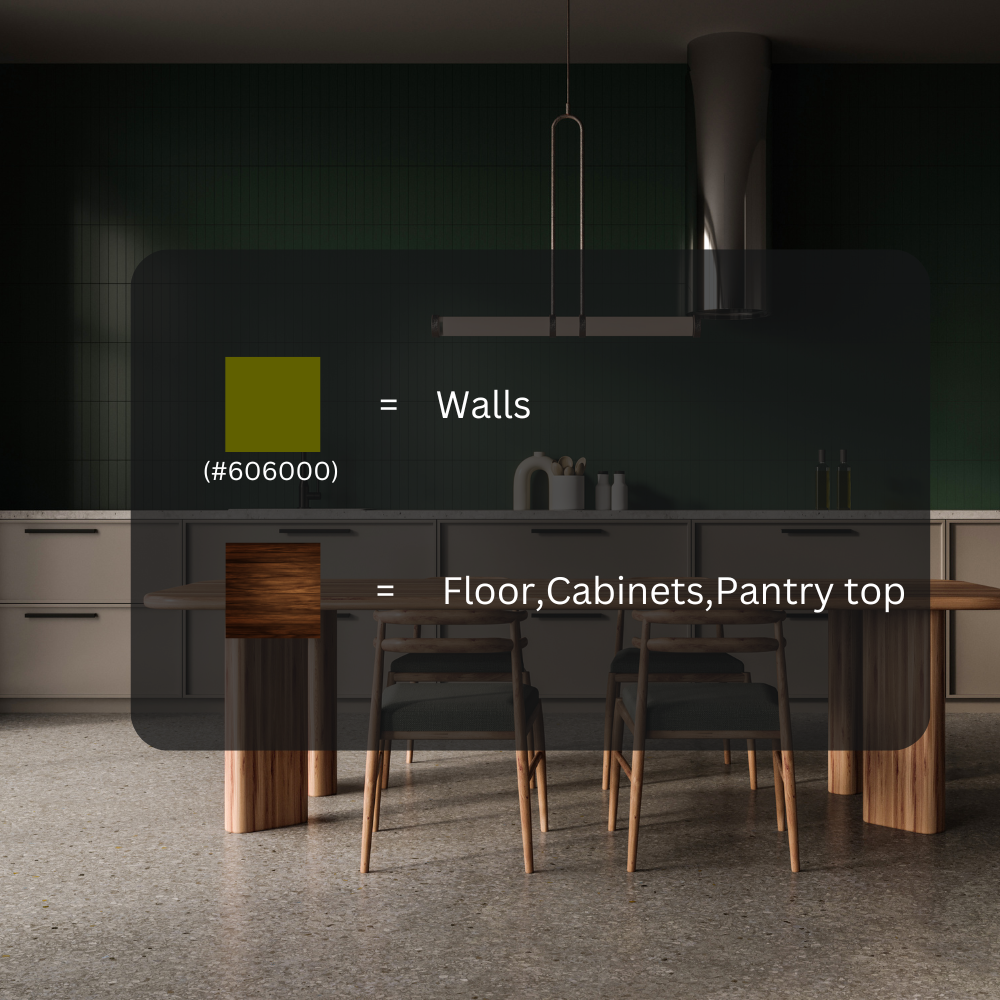
Natural colors are ideal for small kitchens because they bring in calming, natural tones.
White cabinets and walls with olive green on the refrigerator is good-looking.
A dark wood countertop with wood trim having a weathered look adds to the finish for a wonderful change from light to dark.
The naturally occurring greens and browns provide rich contrast without overwhelming the room, since they’re balanced by all the white and plenty of natural light, so the kitchen isn’t made too dark.
Green + Green + Green
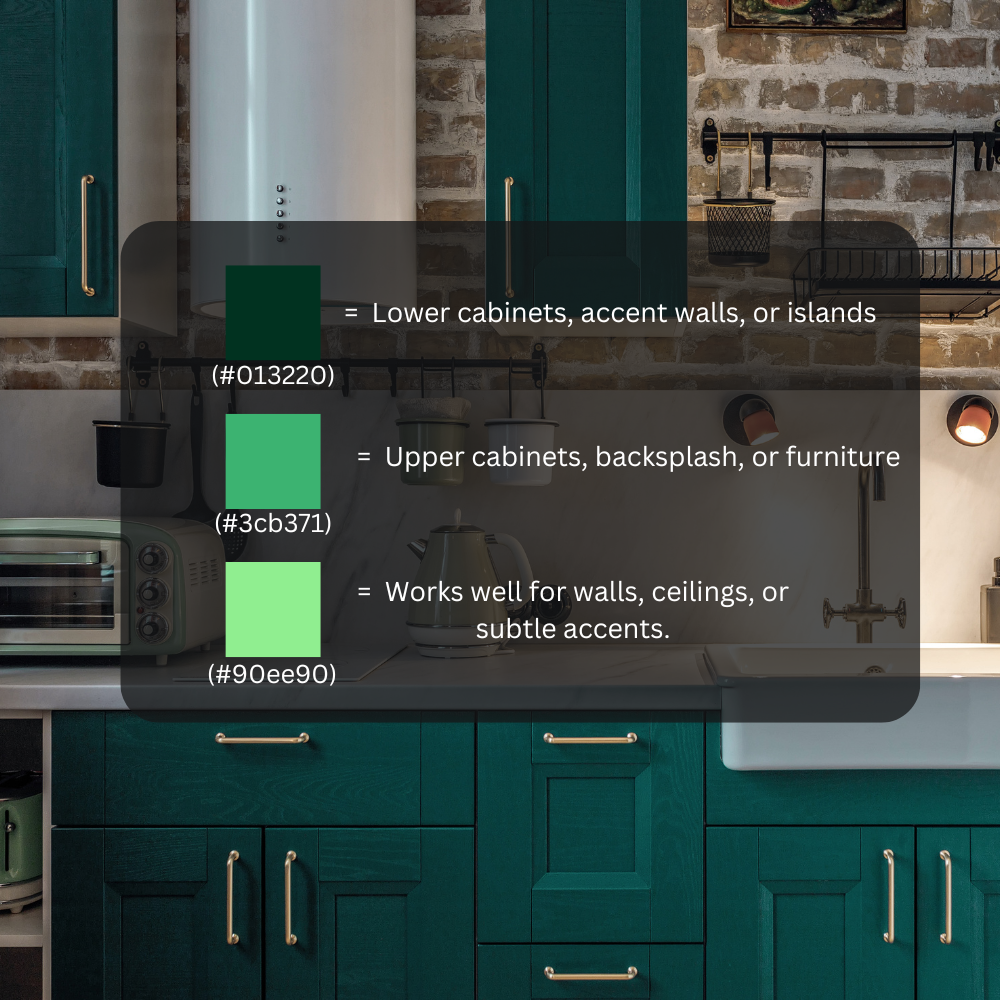
Having one color dominate an entire room can, in a twist, make the room feel larger. The lack of visual contrast—a transition from one color to another, like white cabinets to a green backsplash—is supportive of avoiding making small rooms feel more frantic.
Interior designer Dabito’s Los Angeles kitchen for this project uses the same calming green for its cabinets, walls, and range hood (Behr’s Royal Orchard Semigloss enamel), chosen not only for how relaxing the room will become, but also for durability, too.
White countertops and a sink provide the sole contrast, making the kitchen feel light and airy.
Black + White + Wood
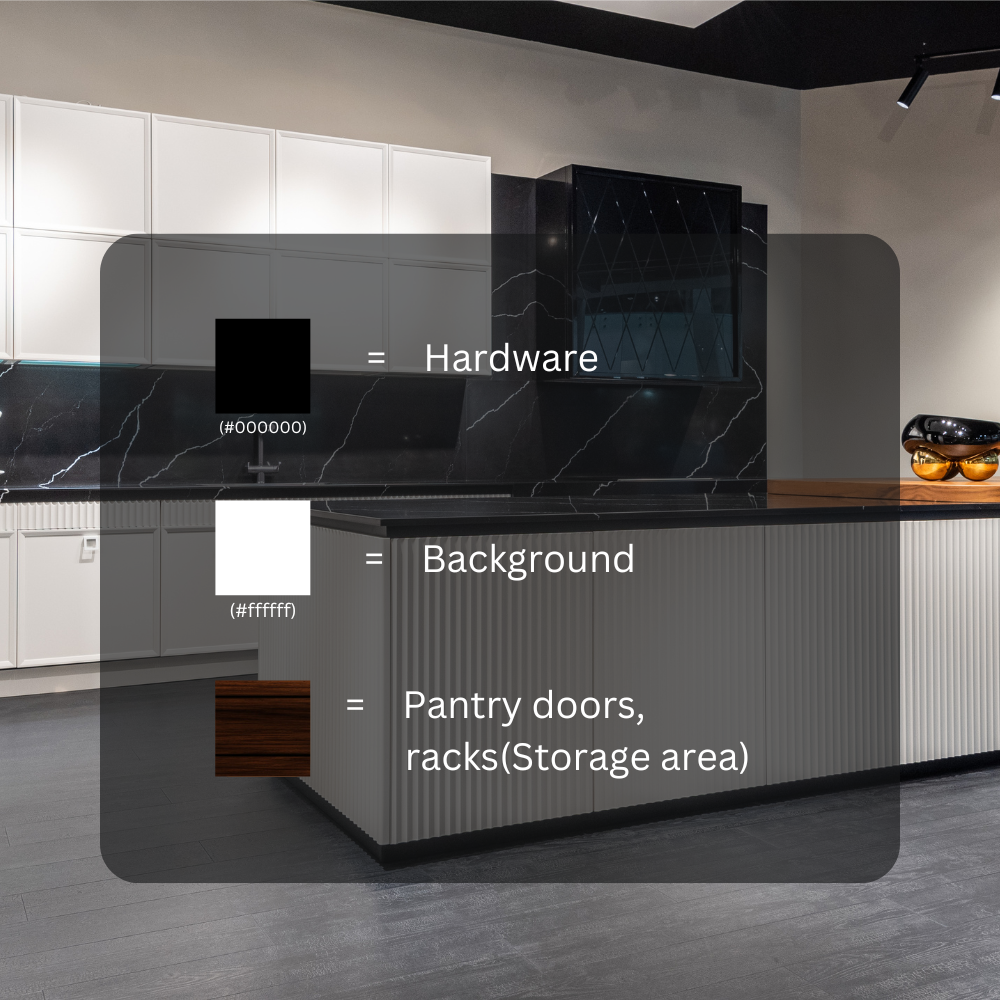
This tiny Washington, D.C. kitchen takes advantage of clever storage and intelligent color choice.
Interior designer Shannon Claire used black paint on lower cabinets with matching black hardware, allowing them to recede easily into the countertops and reduce visual clutter.
Functional appeal is created by a white IKEA picture rail installed with mug and tool hooks, and instead of weighty upper cabinets, there is open shelving, letting in more light and creating the sensation of less closeness. Natural wood tones on decor and shelving add texture, warmth, and a contrast to the graphic black and white. Large white tiles with narrow grout lines soften the black countertops and maintain the atmosphere fresh, clean, and bright.

